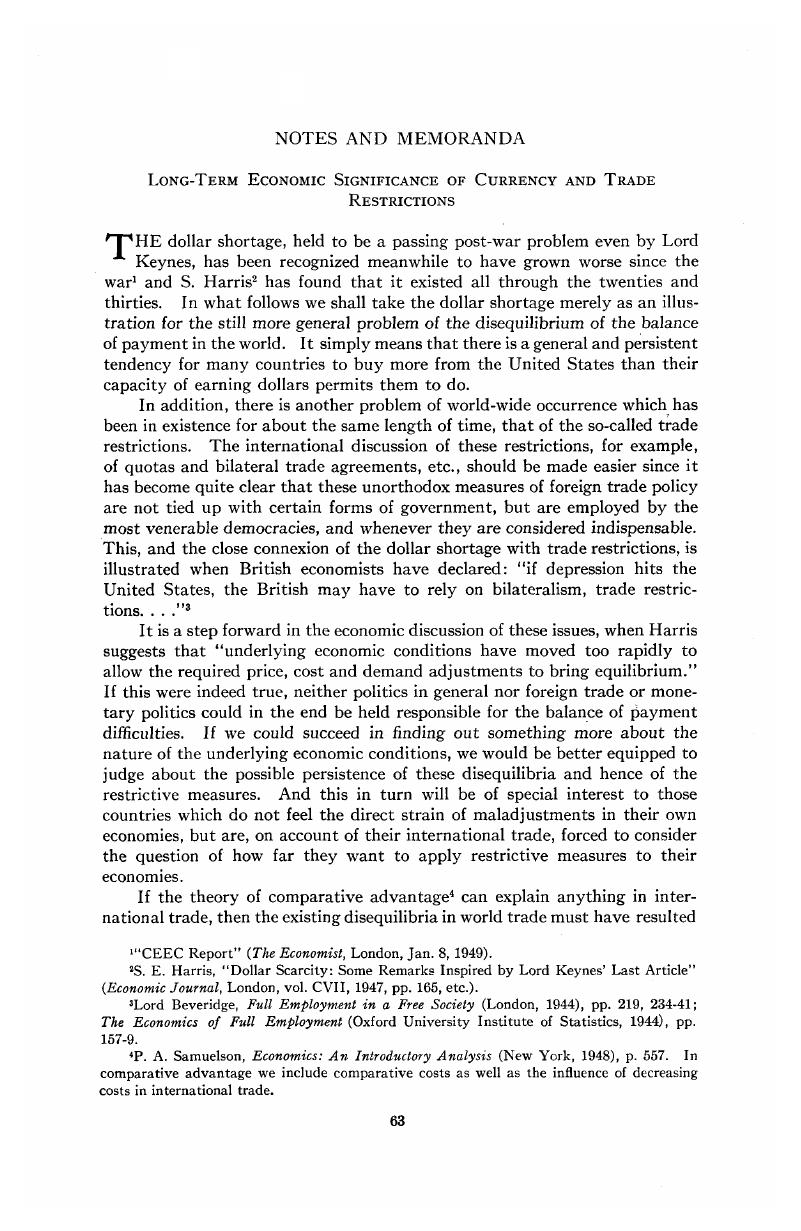No CrossRef data available.
Published online by Cambridge University Press: 07 November 2014

1 “CEEC Report” (The Economist, London, 01 8, 1949).Google Scholar
2 Harris, S. E., “Dollar Scarcity: Some Remarks Inspired by Lord Keynes' Last Article” (Economic Journal, London, vol. CVII, 1947, pp. 165, etc.).Google Scholar
3 Beveridge, Lord, Full Employment in a Free Society (London, 1944), pp. 219, 234–41Google Scholar; The Economics of Full Employment (Oxford University Institute of Statistics, 1944), pp. 157–9.Google Scholar
4 Samuelson, P. A., Economics: An Introductory Analysis (New York, 1948), p. 557.Google Scholar In comparative advantage we include comparative costs as well as the influence of decreasing costs in international trade.
5 Boulding, K. E., “Equilibrium and Wealth: A Word of Encouragement to Economists” (Canadian Journal of Economics and Political Science, vol. V, 1939, pp. 1, etc.).CrossRefGoogle Scholar
6 For illustration of relatively high wages in “new” industries in England see, for instance, Pfister, B., Sozialpolitik als Krisenpolitik (Stuttgart, 1936), p. 111.Google Scholar
7 Allen, R. G. D. and Bowley, A. L., Family Expenditure (London, 1935).Google Scholar
8 Schumpeter, J., Theorie der wirtschaftlichen Entwicklung (Leipzig, 1912).Google Scholar
9 Jones, G. T., Increasing Return: A Study of the Relation between the Size and Efficiency of Industries with Special Reference to the History of Selected British and American Industries, 1850–1910, edited by Clark, C. (Cambridge, 1933).Google Scholar
10 Ibid., p. 249.
11 Ibid., p. 251.
12 Ibid., p. 254.
13 Ibid., p. 115.
14 Ibid., p. 51.
15 Organisation for European Economic Co-Operation, vol. I (Paris, 1948), chaps. 2, 25.
16 Economic News, vol. XVII, nos. 7–8, 07-Aug., 1948.Google Scholar
17 Boulding, K. E., Economic Analysis (2nd ed., New York, 1948), p. 211.Google Scholar
18 Ibid., p. 651.
19 Cf “Production of Industrial Nations in World War I and II” (National Bulletin of Economic Research, New York, 1944).Google Scholar